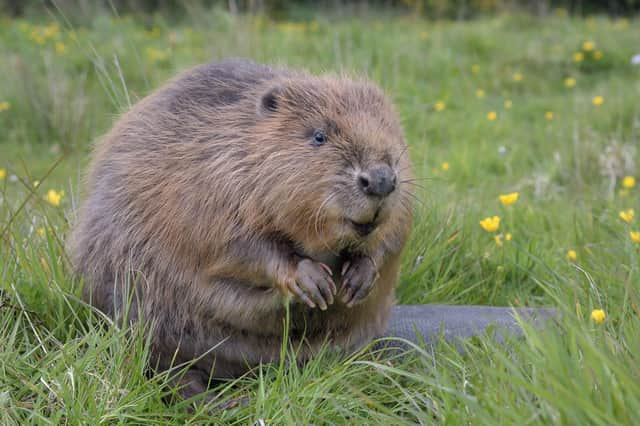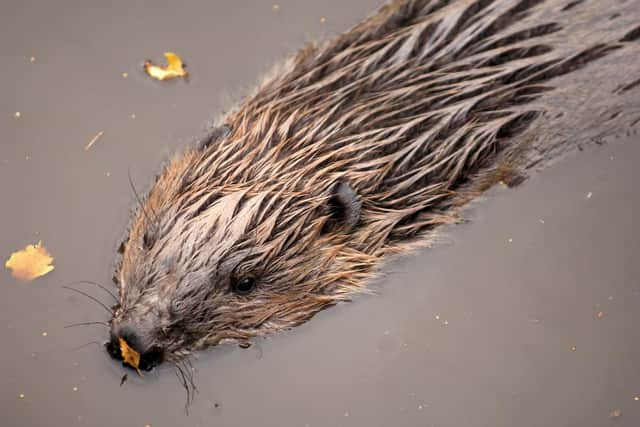Beaver expansion: Numbers in Scotland more than double in last three years, according to NatureScot survey


Research found the semiaquatic rodents are spreading out from Tayside - where territory numbers also more than doubled to 251 - to Forfar, Crianlarich and Stirling.
Experts said the expansion will likely reach into Loch Lomond in the future.
Advertisement
Hide AdAdvertisement
Hide AdThe beaver numbers survey was carried out last winter and is the largest of kind ever conducted in the UK.


NatureScot worked with beaver specialist, Roisin Campbell-Palmer, and experts at the University of Exeter to conduct the survey.
Dr Roisin Campbell-Palmer, the report lead author, said: "Beavers are recognised as ecosystem engineers with important biodiversity benefits, though some impacts can be challenging alongside certain land-use practices.
"This survey will hopefully provide valuable information to land managers and policy makers seeking to maximise the benefits and minimise the conflicts associated with the return of beavers to our rivers."
Through research carried out by foot and by canoe, expert beaver surveyors found 13,204 confirmed signs of beaver life – such as burrows, dams, lodges, scent mounds, canal digging, and tree and crop feeding.
The survey also assessed the health and spread of the overall population, to help inform future beaver studies.
Robbie Kernahan, director of Sustainable Growth, said: "Wildlife is declining in Scotland so this extensive survey, which reveals an increasing beaver population, is great news for nature in Scotland.
"Beavers play a vital role in creating and restoring wetlands where other species can thrive, reducing downstream flooding and improving water quality.
Advertisement
Hide AdAdvertisement
Hide Ad"We also hope that many people in Scotland will enjoy spotting these sometimes elusive but fascinating animals, as they become more common."
The recent survery investigated areas where beaver sightings had been reported but not confirmed.
It comes after beavers gained protected status as European Protected Species in Scotland in 2019.
During the last survey in 2017, approximately 1,300 km of river and loch shore were surveyed, but the recent survey covered a wider area from Fife to Loch Lomond.
Dr Alan Puttock, from the University of Exeter, said: "This survey, the biggest undertaken in Britain, combined extensive field surveys and analysis to map the spatial distribution and territory dynamics of beavers across Tayside and surrounding areas.
"Developing this methodology in what is currently Britain's largest wild population helps provide robust and replicable means by which to study beaver populations nationally."
The survey follows the 2020 Beaver Management Report which outlines the mitigation measures undertaken by NatureScot and land managers last year to reduce the negative impacts of beaver activity, such as burrowing and dam building on agricultural land.
Some 56 beaver dams were removed, and 115 beavers lethally controlled.
Advertisement
Hide AdAdvertisement
Hide AdMr Kernahan added: "Beavers are nature's supreme water engineers, but we know they may cause severe problems in some areas, particularly for crops on prime agricultural land and for important infrastructure like road drains or railway lines.
"This is reflected in the number of cases where mitigation measures were needed, such as fencing and flow devices or dam removal, as well as in the number of beavers which had to be trapped and moved or controlled under licence this past year."
A message from the Editor:
Thank you for reading this article. We're more reliant on your support than ever as the shift in consumer habits brought about by Coronavirus impacts our advertisers.
If you haven't already, please consider supporting our trusted, fact-checked journalism by taking out a digital subscription.
Comments
Want to join the conversation? Please or to comment on this article.
